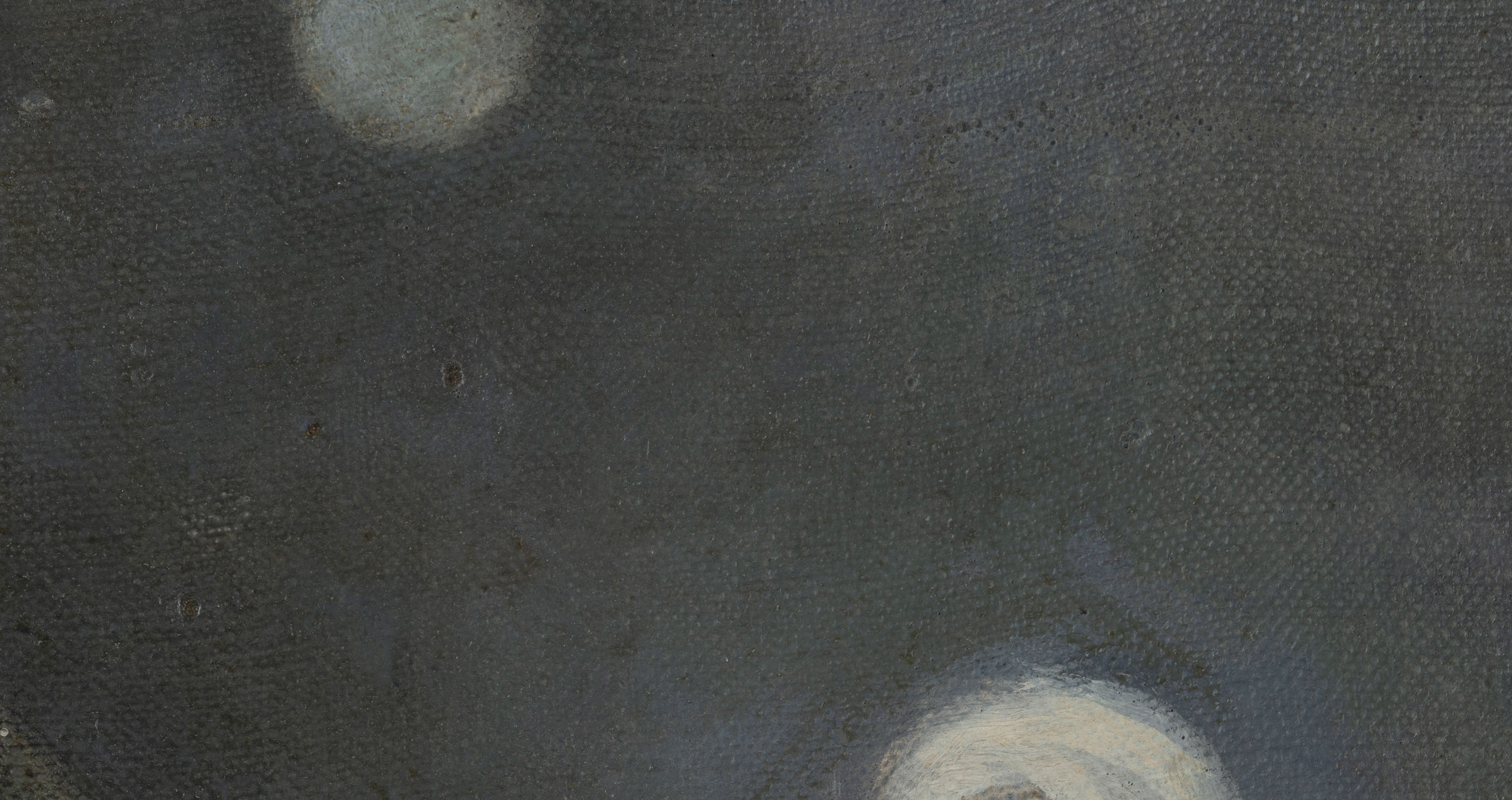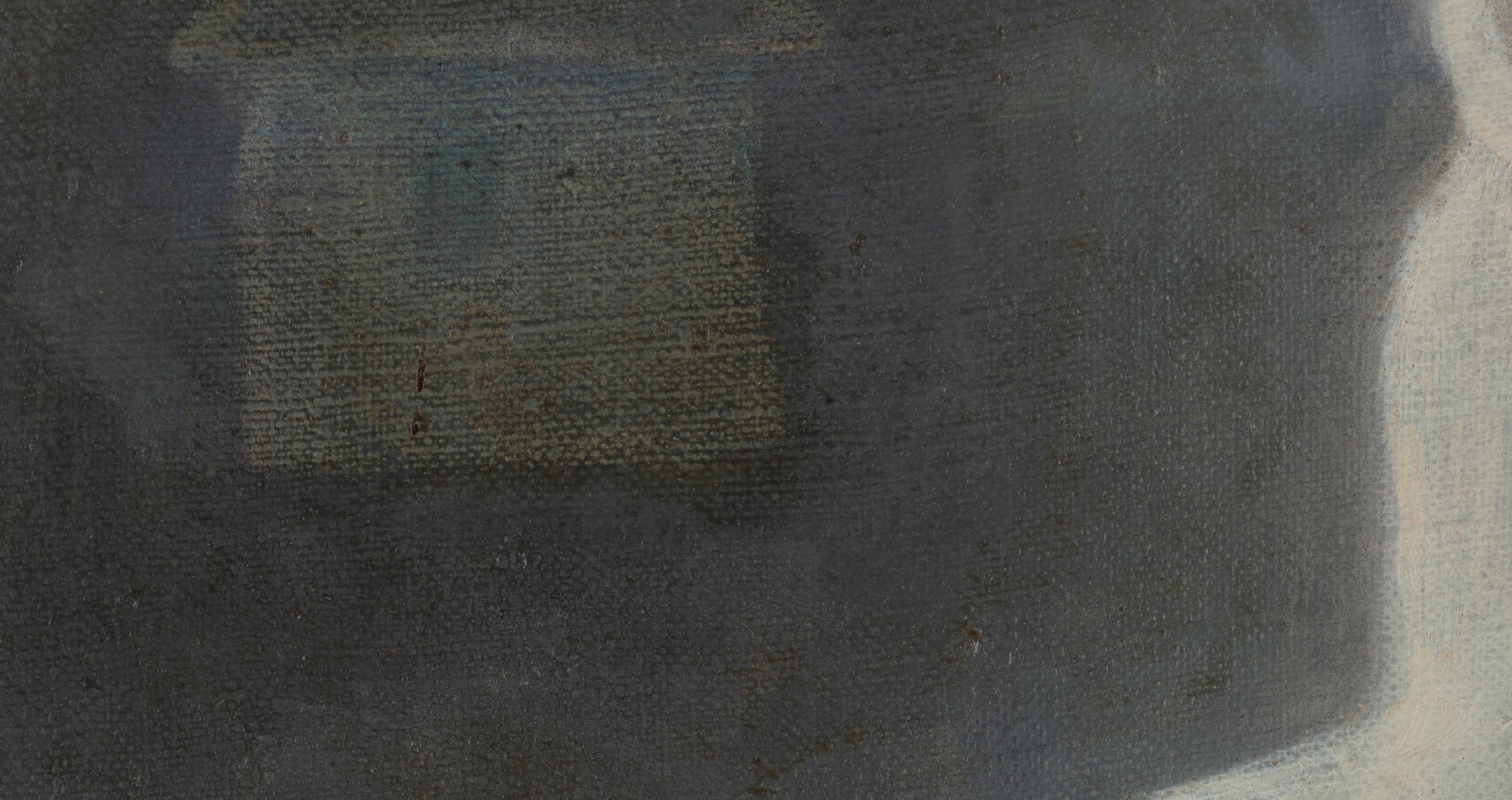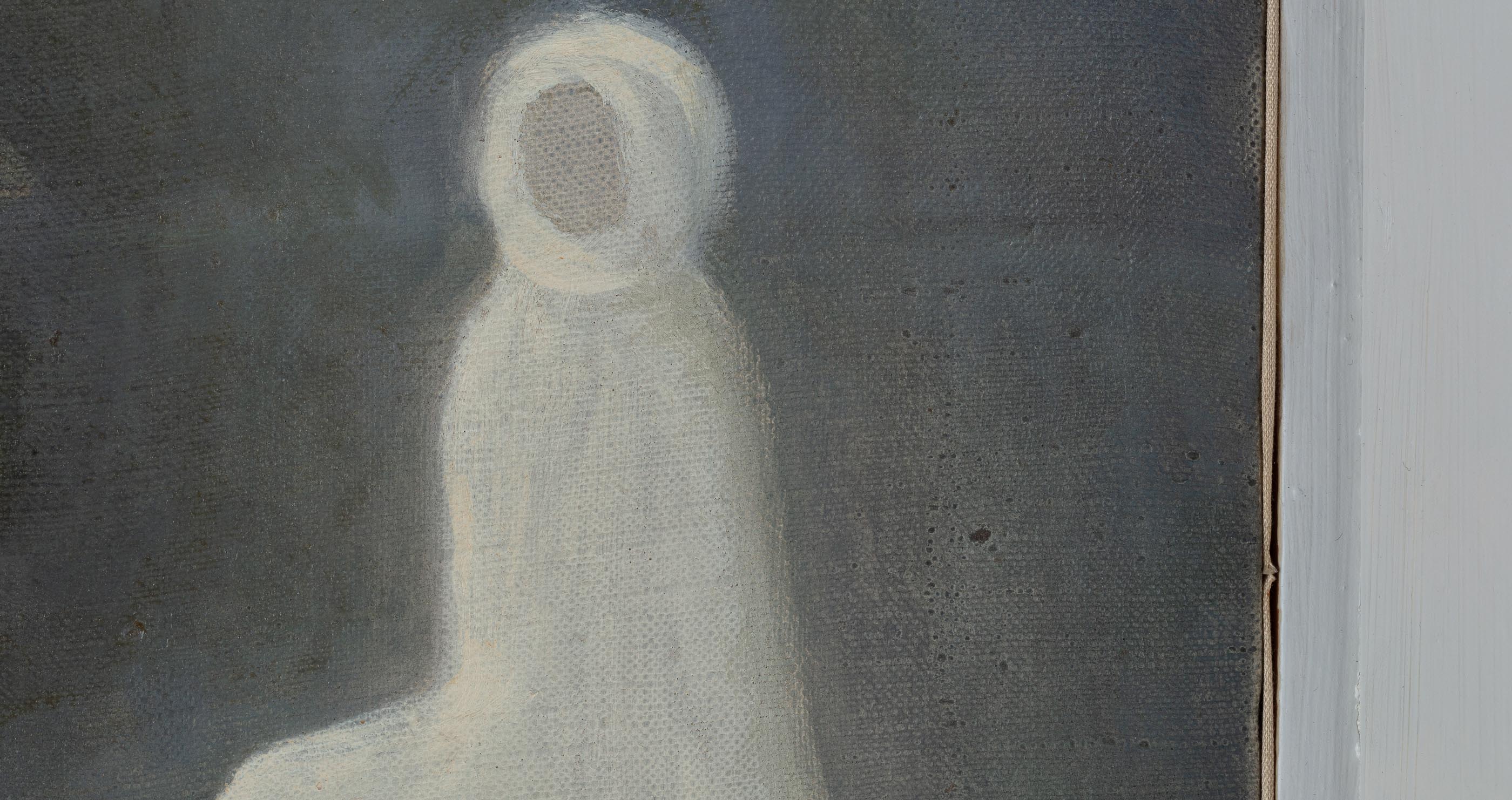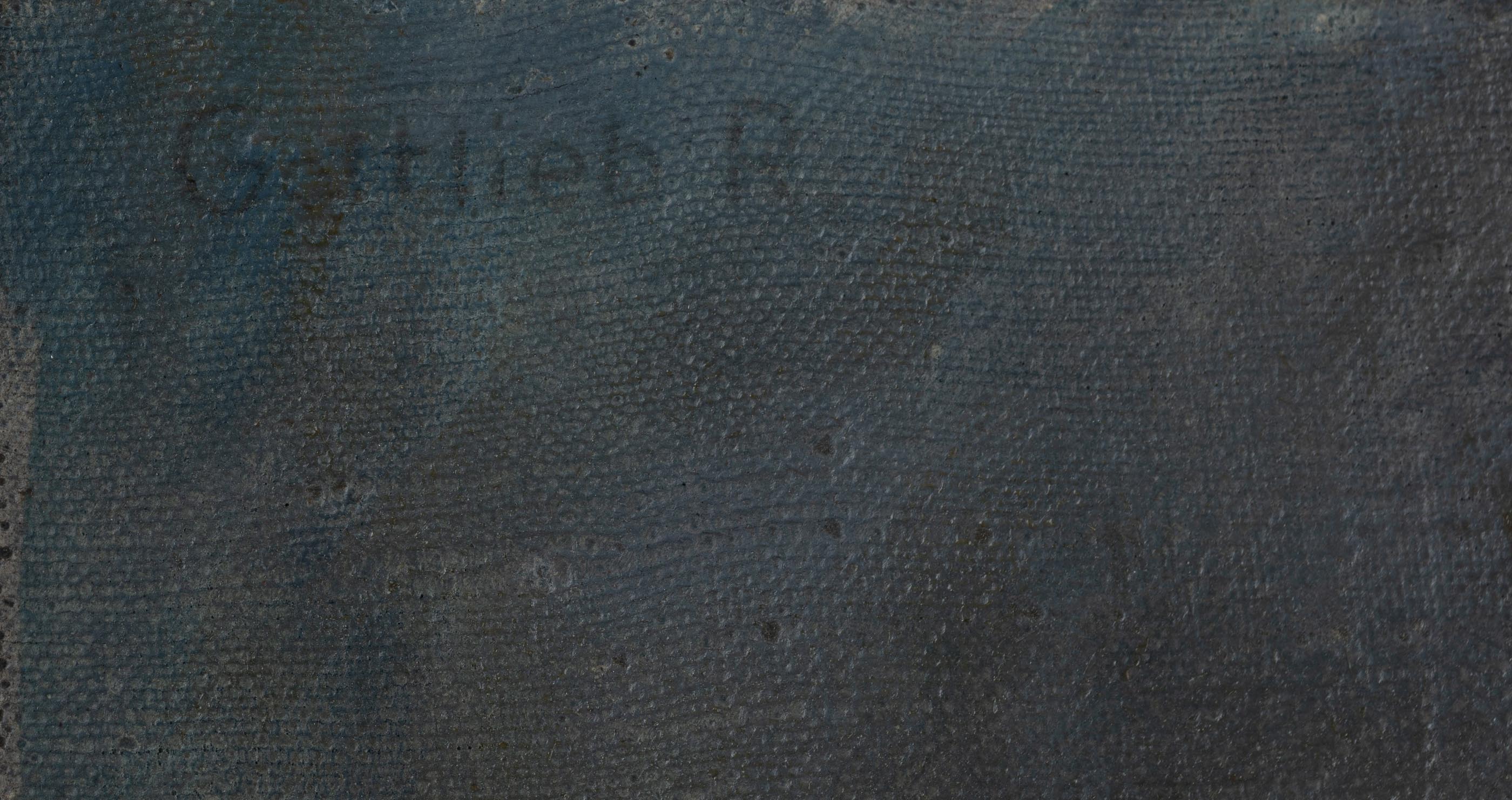Waiting bride
Waiting Bride
oil, canvas 26 x 26 cm
Although some of the most famous painters, such as Mary Cassat or Berthe Morisot, addressed issues related to motherhood and the private, domestic, female life, other important creators such as Mary Shelley, with her novel Frankenstein, showed that women can produce not only delicate and lovely works, but also works with a more frightening component.
The character in Gottlieb Rozsá's work is a woman completely devoid of any features. Her face is an empty space, an artistic procedure that can no longer be attributed only to formal modernist simplifications. This slightly frightening absence has a symbolic value.
The white wedding dress, dominant in the work, takes the place of the character's identity. The "waiting bride" is consumed by the absence of her husband.
The house, the symbol of the family and the space that brings it together, is small and desolate, and the female character is far from it, which - in correlation with the title - builds a grievous image of loneliness, of the absence of the family.
In the context in which the whole scene seems to be dark, the celestial body in the background can be identified as the moon and not the sun, and in this case, the ghostly brightness of the character contributes to the slightly macabre atmosphere of the work.
Lorem Ipsum
Gottlieb Rozsa
Waiting Bride
oil, canvas 26 x 26 cm
- Signed on top left with grey:
Gottlieb R.
- on the back: titled with pencil on chassis:
Várakozó menyasszony
- Origin:
Lajos Kántor Collection
- Condition of the work:
Good
- Documents:
expert report drafted by Sebestyén Székely no. 1636 dated 13.12.2019
Sale certificate from Quadro Gallery, the cultural asset appearing at no. 1655 dated 17.12.2019
export certificare no.. 28 dated 16.12.2019

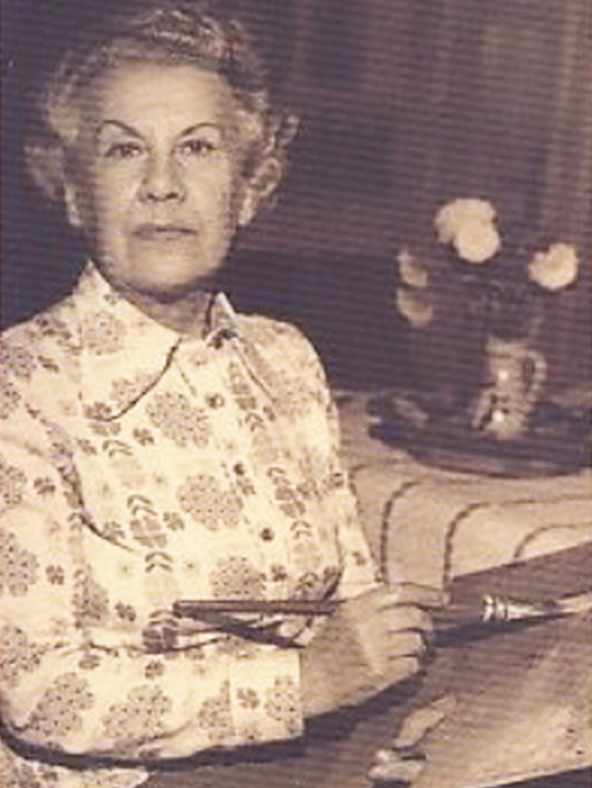
Gottlieb Rozsa
1918, Oradea - Cologne, 2012
Rózsa Gottlieb is, as her name would suggest, God's beloved human.
SEE DETAILS


